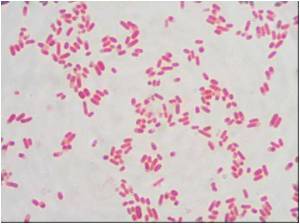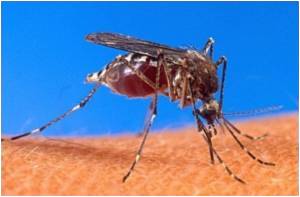Biologists has identified a set of nerve cells in desert locusts that bring about 'gang-like' gregarious behaviour when they are forced into a crowd.

The findings demonstrate the importance of individual history for understanding how brain chemicals control behaviour, which may apply more broadly to humans also.
Locusts are normally shy, solitary animals that actively avoid the company of other locusts. But when they are forced into contact with other locusts, they undergo a radical change in behaviour - they enter a 'bolder' gregarious state where they are attracted to the company of other locusts. This is the critical first step towards the formation of the notorious locust swarms.
Dr Ott said: "Locusts only have a small number of nerve cells that can synthesise serotonin. Now we have found that of these, a very select few respond specifically when a locust is first forced to be with other locusts. Within an hour, they produce more serotonin. It is these few cells that we think are responsible for the transformation of a loner into a gang member. In the long run, however, many of the other serotonin-cells also change, albeit towards making less serotonin."
When a locust is first forced into contact with other locusts, a specific set of nerve cells that produce the neurochemical serotonin is responsible for reconfiguring its behaviour so that the previously solitary locust becomes a member of the gang, which is known as 'gregarious' behaviour.
An entirely different set of its serotonin-producing nerve cells is then affected by life in the group in the long run.
Advertisement
"There is an important lesson here for understanding the mechanisms that drive changes in social behaviour in general, both in locusts and in humans. We have shown how important it is to look at what happens when a new social behaviour is first set up, not just at the long-term outcome. Research in insects can give us deep insights into how brains work in general, including our own."
Advertisement
The new study, which was funded by the Leverhulme Trust, the Biotechnology and Biological Sciences Research Council (BBSRC) and the Royal Society, has identified the individual serotonin-producing nerve cells that are responsible for the switch from solitary to gregarious behaviour.
The scientists used a fluorescent stain that reveals the serotonin-producing nerve cells under the microscope. This allowed them to measure the amount of serotonin in individual nerve cells -- the brighter a nerve cell lights up, the more serotonin it contains. The newly identified cells were much brighter in locusts that had just been forcedly crowded with other locusts. Moreover, the same cells were also brighter in locusts that had their hind legs tickled by the researchers for an hour -- which is sufficient to make the locusts behave gregariously.
Serotonin has important roles in the brains of all animals that include the regulation of moods and social interactions. In humans, there are strong links between changes in serotonin and mental disorders such as depression and anxiety.
Study shows 'swarm' mentality in locusts is a result of specific nerve cells that produce the brain chemical serotonin. Serotonin in humans is known to affect mood and behaviour such as aggression and anxiety. Research in insects can give us deep insights into how brains work in general, including the human brain.
Source-Eurekalert










